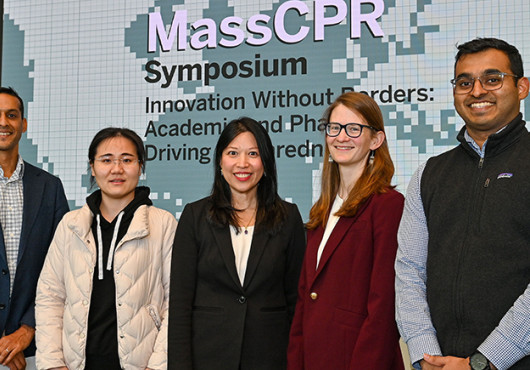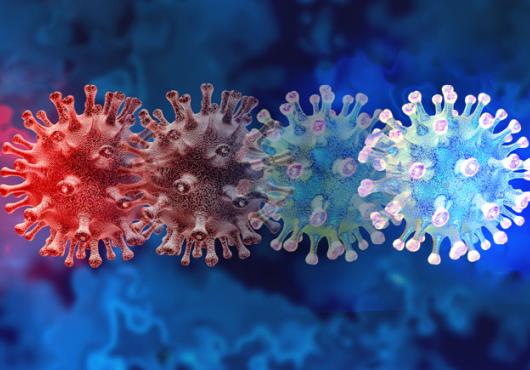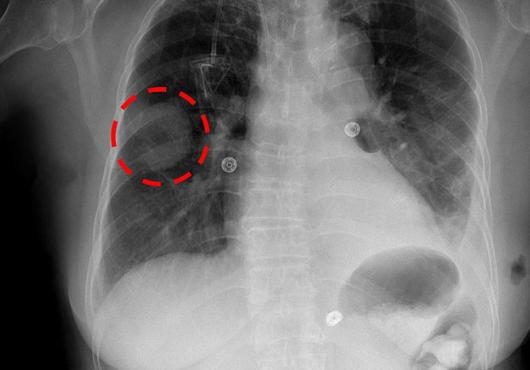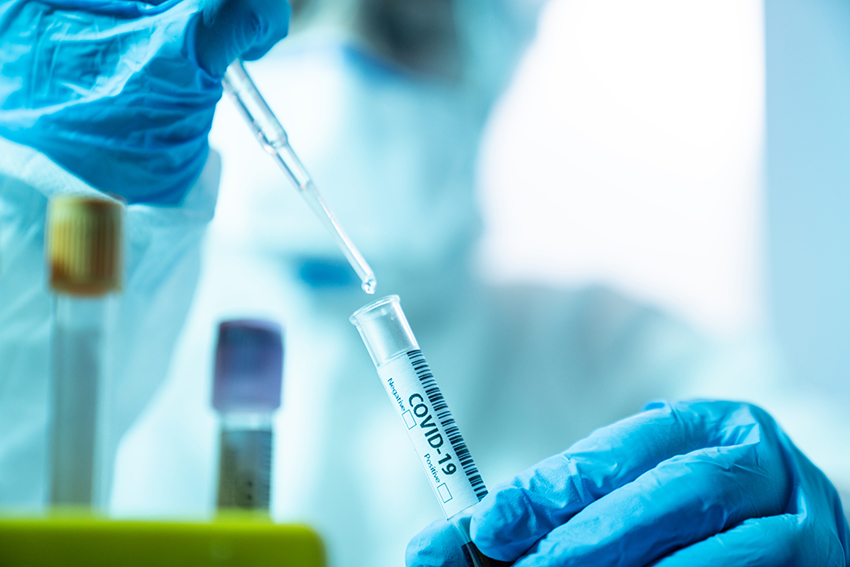
Image: selimaksan/Getty Images
This article is part of Harvard Medical School’s continuing coverage of medicine, biomedical research, medical education, and policy related to the SARS-CoV-2 pandemic and the disease COVID-19.
On Jan. 19, 2020, a 35-year-old man entered an urgent care clinic north of Seattle. With a fever and a dry, persistent cough, he might have been treated for seasonal flu or a common cold under normal circumstances. But only five days earlier, he had returned from a trip to Wuhan, China, where a new flu-like illness was beginning to spread rapidly.
Doctors swabbed his nose and throat and sent the samples to the U.S. Centers for Disease Control and Prevention in Atlanta for testing. A day later, the CDC returned a positive result for a virus soon to be known as SARS-CoV-2. The U.S. had diagnosed its first COVID-19 patient—the first droplet of the flood that was about to engulf the country.
Diagnostic tests are the backbone of efforts to track, treat, and control any infectious disease. Early on in the pandemic, however, uncertainty reigned as the CDC and clinics and hospitals around the country faced overwhelming demand for testing. The ensuing problems—ranging from slow turnaround and depleted or faulty reagents to concerns over error rates and false positives and negatives—strained the country’s pandemic response.
Today, while diagnostic needs are far from met, more than 1.5 million COVID-19 tests are carried out in the U.S. every day, and a total of more than 300 million tests have been administered in a little over a year. Driven by a wellspring of innovation, new approaches and technologies, such as point-of-care and at-home tests, are now emerging as diagnostic options.
From the very beginning, scientists and clinicians at Harvard raced to address the unmet needs of the pandemic, including pushing at the frontiers of diagnostic science. Last March, together with colleagues across Massachusetts and at the Guangzhou Institute of Respiratory Health in China, Harvard Medical School spearheaded the formation of the Massachusetts Consortium on Pathogen Readiness, or MassCPR, in a sweeping effort to tackle every aspect of the COVID-19 pandemic and to prepare for future pandemics.
As the first anniversary of MassCPR approaches, Harvard Medicine News spoke with the co-leads of its diagnostics working group about where we stand with COVID-19 diagnostics today, and where we need to be tomorrow.
 Pardis Sabeti
Pardis Sabeti
Professor, Department of Organismic and Evolutionary Biology, Harvard
Professor of Immunology and Infectious Diseases
Harvard T.H. Chan School of Public Health
Institute Member, Broad Institute of MIT and Harvard
Investigator, Howard Hughes Medical Institute
David Walt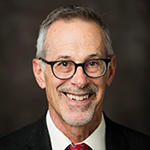
Hansjörg Wyss Professor of Biologically Inspired Engineering
HMS Professor of Pathology, Brigham and Women’s Hospital
Core Faculty-Wyss Institute
Professor, Howard Hughes Medical Institute
HM News: One year in, where do we stand with diagnostics compared to where we were last year?
Walt: There’s been a huge amount of progress with diagnostics. At the beginning, what the public and perhaps many in the field didn’t fully realize was the gargantuan amount of testing that’s required to keep a global pandemic in check. We needed on the order of three times the total installed diagnostic testing capacity in the world at the time.
There were a lot of frustrations with respect to how fast things came online. But you have to understand, there weren’t any diagnostic tests for COVID-19 back when the pandemic hit. The fact that we even had molecular tools like RT-PCR and reagents to detect the virus is a testament to how much science and technology have advanced over the past several decades.
Going from the first infection to identifying the virus’s genetic sequence within two weeks to having actual diagnostic tests within a month—and then scaling those tests—was a remarkable feat.
Sabeti: I agree, we’re in a very different place than where we were a year ago. This has been enabled by a culmination of advances that came during Ebola, Zika, and a number of other infectious disease outbreaks. It’s been a transformative period for diagnostics. So many different diagnostics are emerging, and any one of them could be the next big disruptive technology.
Walt: To Pardis’ point, there have been incredible innovations over the last 10 months. But the reality is that taking a brand-new innovation from inception to commercial implementation is not something that was realistic in the time frame necessary to address the testing needs of this pandemic. The investment in these technologies and the innovation that’s occurred over the last year will more likely pay off as we move into the next phase of either COVID-19 or probably, more realistically, the next infectious disease.
The landscape of testing has already changed significantly. We’ve moved from this mentality of sending samples off to a central lab, to now seeing diagnostics begin to appear in people’s homes so they can self-test. This is really going to change how quickly we can respond to future infectious diseases.
HM News: Are we currently doing good enough?
Sabeti: No. We are not where we need to be. We have technologies in hand that could have gotten us there, if our implementation and scaling and the operations part of it were better. But we certainly aren’t where we need to be.
We need to have tests that are point-of-care and rapidly adaptable when new threats emerge. This is important because you ideally don’t want people coming into hospitals or big centers to get tested. You want people to be able to get tested anywhere—at home, at a primary care office, etcetera. You want to get as far away from the hospitals as possible for testing, so that you’re not gathering potentially infectious people together.
We also need ubiquitous high-throughput testing worldwide. And not just in terms of the number of samples tested, but for the number of different viruses tested. Differential diagnostics for COVID-19 are broad, and ideally we want to be able to test for many different causes of infection simultaneously.
Walt: I would add that central testing requires multiple steps, all of which create delays. You have to have someone collect the sample. Then you wait until there are enough samples to make it worthwhile to ship them to a central lab, all the while keeping them cold. The lab gets the samples, runs the test, then they have to return results to the physician. Then there’s a delay in the doctor getting the result to the individual. These inefficiencies logically demand that we move toward point-of-care testing, to where an individual can take a test and get the result as soon as possible without all those intermediate steps.
HM News: We now have two FDA-approved vaccines, with more on the way. Is there a chance diagnostics will be undervalued?
Sabeti: Diagnostics provide critical knowledge. While not alone sufficient, it is the necessary component of all medical care and public health, and is core to our ability to respond and react. Historically, the problem is that diagnostics have been so undervalued, underfunded, and undersupported. I think COVID has made the case for why diagnostics matter and its standing is better now than it’s ever been before. We just have to keep that motivation up. The big issue is whether we can keep up that momentum when folks get vaccinated and things quiet down. That will be the interesting time to see where we’re at.
Walt: It’s certainly been undervalued, both in terms of what diagnostics provide and in terms of economics. Part of health care is diagnostics, but unfortunately the diagnostics are not what people value. They value therapeutics and vaccines, and so the entire system has been structured around valuing those. But in the end, diagnostics provide the information that’s actionable.
If you have testing in place that is positioned to do surveillance at scale, at the earliest possible time, then you can respond and intervene at an earlier stage. Superspreading events like the Biogen conference never would have happened because we would have known that someone was infected, would’ve quarantined everybody, and not let them get on planes and go back to different parts of the globe.
I think the public finally appreciates the value of knowing: Yes, I have it, no I don’t have it. Yes, I’ve been exposed, no I haven’t been exposed. There’s now a new appreciation for diagnostics. I think we’re going to see a transformed ecosystem. And the FDA is going to be much more favorably disposed toward at-home testing than they ever were before.
HMS News: How do we get to where we need to be, especially with new viral strains emerging?
Sabeti: I’m confident that we’re on the path to where we need to be. It’s literally about maintaining the investment.
Walt: Scale really matters. Ultimately, the players making the biggest difference are the big diagnostics companies that existed before COVID-19. The capacity to produce test kits, create reagents, sample devices, etcetera, is critical. It’s one thing to make something that tests a few million people per year. It’s a completely different level to make billions of tests every year, which is what we need. Unfortunately, I think we just have to live through the growing pains of having to scale the capacity to really address a truly global pandemic.
HM News: What has your experience as leads of the MassCPR diagnostics working group been like?
Sabeti: Honestly, I think the word I would use is delightful. It’s been my home base during this pandemic and it’s been one of the richest opportunities I’ve ever had to collaborate with my colleagues here. There are so many great folks you hear about and interact with at this cursory level, but now we’re all in it together. It’s so fun to be on a call with David Walt and Steve Elledge talking to Feng Zhang, for example, taking a deep dive into their technology and giving each other real feedback.
It’s so rare for everyone to work on the same thing, and the pandemic gave us all a reason to lock in. When we’re all so busy and our bandwidth is so limited, you really do need those reasons to move things forward. So, it’s been awesome. It’s been a really special part of this chaos.
Walt: This has been a unique opportunity from the perspective of those collaborations. Everybody has been so generous, from sharing reagents and information to helping everybody else get things accomplished. This has been a really challenging time, and as soon as the MassCPR working group met, we supported each other with critical components for experiments, advice, networking, and more. It’s been really incredible.
It’s also important to mention that, particularly in the early stages, we had a very significant interaction with our colleagues at the Guangzhou Institute of Respiratory Health. We learned a lot from them in the early days because we had no diagnostic tests at that point, and they were sharing their experiences and lessons learned. It turns out our strategy in the U.S. was very different than China’s. There was a bifurcation of technologies and approaches here, because we don’t have central control over diagnostic testing, which is the approach they used. Nonetheless, that international collaboration with our Chinese colleagues was incredibly valuable and instrumental in helping to catalyze the success of the diagnostics working group.
HMS News: What have some of the highlights and major accomplishments of the working group been?
Sabeti: Our early accomplishments were helping the Boston hospital community access diagnostics right away. We all sat down at that first big meeting in March, and all the hospital people were saying: I just want diagnostics for my patients. I don’t want to hear about new technologies. I just need a test at my hospital right now. So that’s what we focused on and that was our goal at the outset. Members of the working group came together to help set up diagnostics in the big hospitals in Boston, like MGH, Children’s, and Boston Medical Center. This meeting is also where the Broad Institute’s engagement was sparked, leading it to set up massive diagnostic capacity for the hospitals and broader Massachusetts community. The working group has also galvanized a wide range of new diagnostic approaches. We have advanced many different technologies that are now moving very quickly through the R&D and regulatory system.
Walt: The Sample Accelerator is another accomplishment. Very early on during the pandemic, it became clear that sharing samples was a real issue. They were limited, and everyone was trying to figure out how to get samples to test to make sure their particular new technology actually worked. Our working group helped facilitate sample sharing through our weekly meetings, and when it became clear there needed to be a more formal effort to do so, we proposed the sample accelerator. It’s really now effectively a statewide sample repository, including biobanks at MGH, Ragon Institute, Boston Children’s, Brigham and Women’s, UMass Medical, Tufts, and more, where we make samples available to all researchers who need it.
